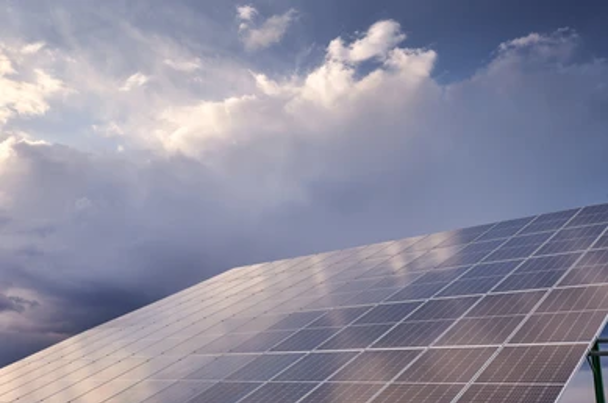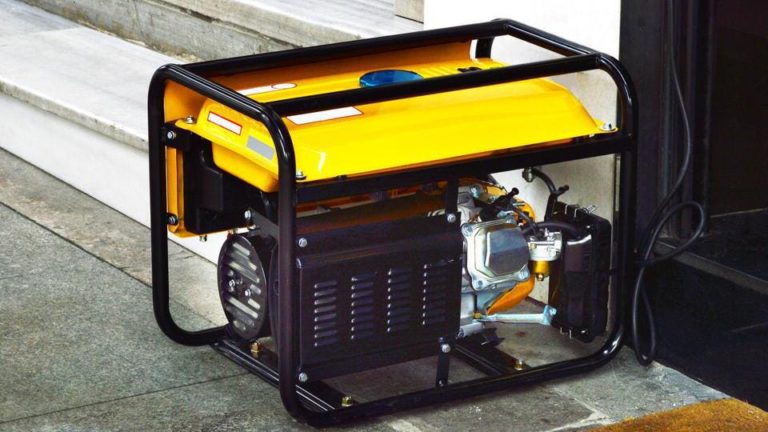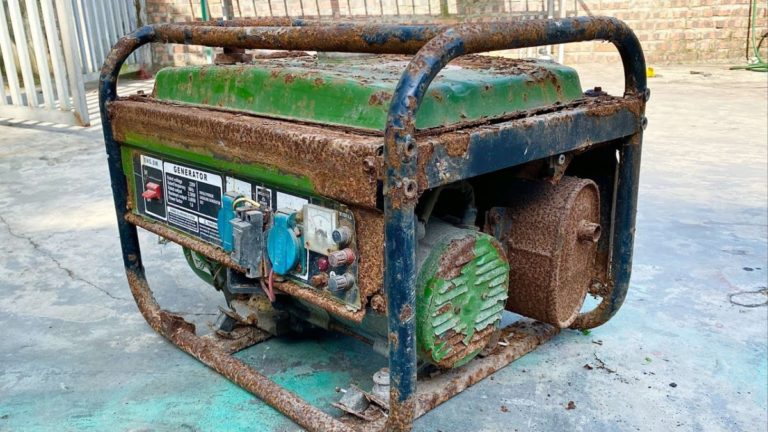As more homeowners turn to renewable energy sources like solar power to meet their electrical needs, it’s important to have a backup plan for when the sun isn’t shining.
Cloudy days can significantly reduce the amount of electricity generated by solar panels, leaving homes without power or relying on grid electricity.
To overcome these challenges, homeowners can adopt strategies such as installing battery storage systems, investing in generator backup units, and integrating energy management systems to optimize energy consumption.
By taking these proactive steps, off-grid homesteaders can ensure a reliable supply of power even on the cloudiest days.
Invest in battery storage
A battery bank can store excess energy generated on sunny days and provide power during cloudy days. Choose a deep-cycle battery with a long lifespan and maintenance-free features.
To ensure the longest lifespan and minimal maintenance, choose a deep-cycle battery with a long lifespan and maintenance-free features.
These batteries are specifically designed to withstand the rigors of daily charging and discharging, and are built with durable materials to extend their lifespan.
Look for batteries with low maintenance requirements, such as sealed battery acid and low water loss, to reduce the need for frequent maintenance.
With a battery bank, you can store excess energy generated on sunny days and enjoy reliable power during cloudy days, all while minimizing the hassle and expense of maintenance.
Implement a backup generator
A portable or permanent generator can provide power during prolonged cloudy periods. Choose a generator with a manual or automatic switchover to ensure seamless transition between power sources.
If you’re looking for a reliable source of power during prolonged cloudy periods, consider investing in a generator.
A portable or permanent generator can provide the necessary power to keep your home or business running smoothly, even when the clouds roll in and the sun is nowhere to be found.
When choosing a generator, it’s important to select one with a manual or automatic switchover feature.
This allows for a seamless transition between power sources, ensuring that your home or business remains powered up and running smoothly, even during extended periods of cloud cover.
With a generator equipped with a manual or automatic switchover, you can rest assured that your power needs will be met, no matter the weather conditions outside.
Use energy-efficient appliances
Replace traditional incandescent bulbs with LED bulbs and install energy-efficient appliances to reduce energy consumption. This will help stretch the available power during cloudy days.
Replacing traditional incandescent bulbs with LED bulbs and installing energy-efficient appliances are two simple yet effective ways to reduce energy consumption and stretch the available power during cloudy days.
LED bulbs use significantly less energy than traditional incandescent bulbs, while still providing the same level of lighting.
In fact, LED bulbs can reduce energy consumption by up to 80% compared to traditional incandescent bulbs.
Moreover, energy-efficient appliances such as LED televisions, refrigerators, and washing machines use significantly less energy than their traditional counterparts.
By installing these energy-efficient appliances, you can reduce your energy consumption by up to 50%.
These appliances are designed to last longer than traditional appliances, which means you’ll save money on replacement costs over time.
By taking these simple steps, you can significantly reduce your energy consumption, stretch the available power during cloudy days, and save money on your energy bills.
Employ load management strategies
Use smart power strips or timers to turn off non-essential loads during cloudy periods. This will help conserve energy and ensure essential appliances have enough power.
Using smart power strips or timers to turn off non-essential loads during cloudy periods is a simple yet effective way to conserve energy and ensure that essential appliances have enough power.
Smart power strips can be programmed to automatically turn off devices that are not in use during certain times of the day, such as when the sun is cloudy.
This can be especially helpful for devices that consume a lot of power, such as televisions and gaming consoles.
Timers can be used to turn off devices at specific times, such as when the sun is at its lowest point.
By using smart power strips or timers, homeowners can save energy and reduce their electricity bills, all while ensuring that essential appliances like refrigerators and lights have enough power to function properly.
Furthermore, many smart power strips and timers can be controlled remotely through mobile apps, making it easy to turn off devices from anywhere.
By taking advantage of these technologies, homeowners can significantly reduce their energy consumption and contribute to a more sustainable future.
Harness rainwater
Install a rainwater harvesting system to collect and store rainwater for non-potable uses such as flushing toilets and washing clothes. This will reduce the reliance on the solar-powered water pump.
Installing a rainwater harvesting system can greatly reduce the reliance on the solar-powered water pump.
By collecting and storing rainwater, you can use it for non-potable purposes such as flushing toilets and washing clothes.
This not only conserves water, but it also reduces the amount of energy needed to pump water from the ground or from a distant source.
A rainwater harvesting system typically consists of a collection surface, such as a roof or a grassy area, a gutter system to direct the rainwater to a storage tank, and a storage tank made of food-grade materials.
The system can be designed to capture both rainfall and stormwater, providing a sustainable source of water for your home.
By implementing this solution, you can reduce your reliance on the solar-powered water pump and save money on your water and energy bills.
You will be using a renewable source of water that is freely available, making your home more sustainable and environmentally friendly.
To install a rainwater harvesting system, you can consult with a professional installer or a local expert who can assess your water needs and design a customized system that fits your specific requirements.
With proper maintenance, a rainwater harvesting system can provide a reliable source of water for your home for many years to come.
Use passive design features
Incorporate passive design features such as large north-facing windows for natural lighting and ventilation. These features can help reduce the need for artificial lighting and heating during cloudy days.
Absolutely!
One of the simplest and most effective design features to include in your home is large north-facing windows.
These windows allow natural light to flood the space, illuminating your home without the need for artificial lighting.
Not only does this reduce the need for lighting, but it also helps to reduce the need for heating during cloudy days.
By incorporating passive design features like large north-facing windows, you can significantly decrease your reliance on artificial lighting and heating, making your home more energy efficient and sustainable.
Natural light has been shown to have numerous health benefits, including improved mood and cognitive function, so filling your home with natural light can have a positive impact on both your physical and mental well-being.
By prioritizing passive design features like large north-facing windows, you can create a comfortable, sustainable, and healthy living space.
Insulate and air-tighten the home
Proper insulation and air sealing can help reduce heat loss during cloudy days, ensuring a comfortable indoor temperature with minimal solar power input.
Proper insulation and air sealing are important components of an energy-efficient home, especially during cloudy days when solar power input may be limited.
A well-insulated and airtight home can significantly reduce heat loss, maintaining a comfortable indoor temperature without relying heavily on solar power.
This is especially important during the winter months when heating demands are high and solar panel efficiency is low.
To ensure proper insulation and air sealing, homeowners should focus on a few key areas.
They should ensure that their home has adequate wall insulation, preferably using a material with a high R-value (a measure of heat resistance).
They should seal any air leaks around windows, doors, and electrical outlets using caulk or weatherstripping.
They should consider installing a heat recovery ventilator (HRV) to maintain a consistent indoor temperature while minimizing heat loss.
By prioritizing proper insulation and air sealing, homeowners can significantly reduce their heating demands and ensure a comfortable indoor temperature during cloudy days, all while maximizing the efficiency of their solar power system.
Monitor and adjust your system
Regularly monitor your solar and battery systems to identify any issues or inefficiencies. Adjust your system as needed to optimize energy production and usage during cloudy days.
You should regularly inspect your solar panels for any dust or debris build-up, which can reduce their efficiency.
Also, check the battery storage level and charge/discharge rates to ensure it’s operating within the desired parameters.
During cloudy days, adjust your system by maximizing energy usage from your battery storage and minimizing energy consumption from the grid.
This can be done by adjusting your energy usage patterns, such as running appliances during the cloudy periods or using energy-efficient devices.
Furthermore, you can use cloudy days to recharge your battery storage, as the reduced solar energy production can be offset by using the battery storage to meet your energy needs.
By regularly monitoring and adjusting your solar and battery systems, you can optimize your energy production and usage, reduce your energy costs, and ensure a reliable and efficient energy supply.
Want More? Dive Deeper Here!
Hey there! If you’re the type who loves going down the rabbit hole of information (like we do), you’re in the right spot. We’ve pulled together some cool reads and resources that dive a bit deeper into the stuff we chat about on our site. Whether you’re just killing time or super into the topic, these picks might just be what you’re looking for. Happy reading!






